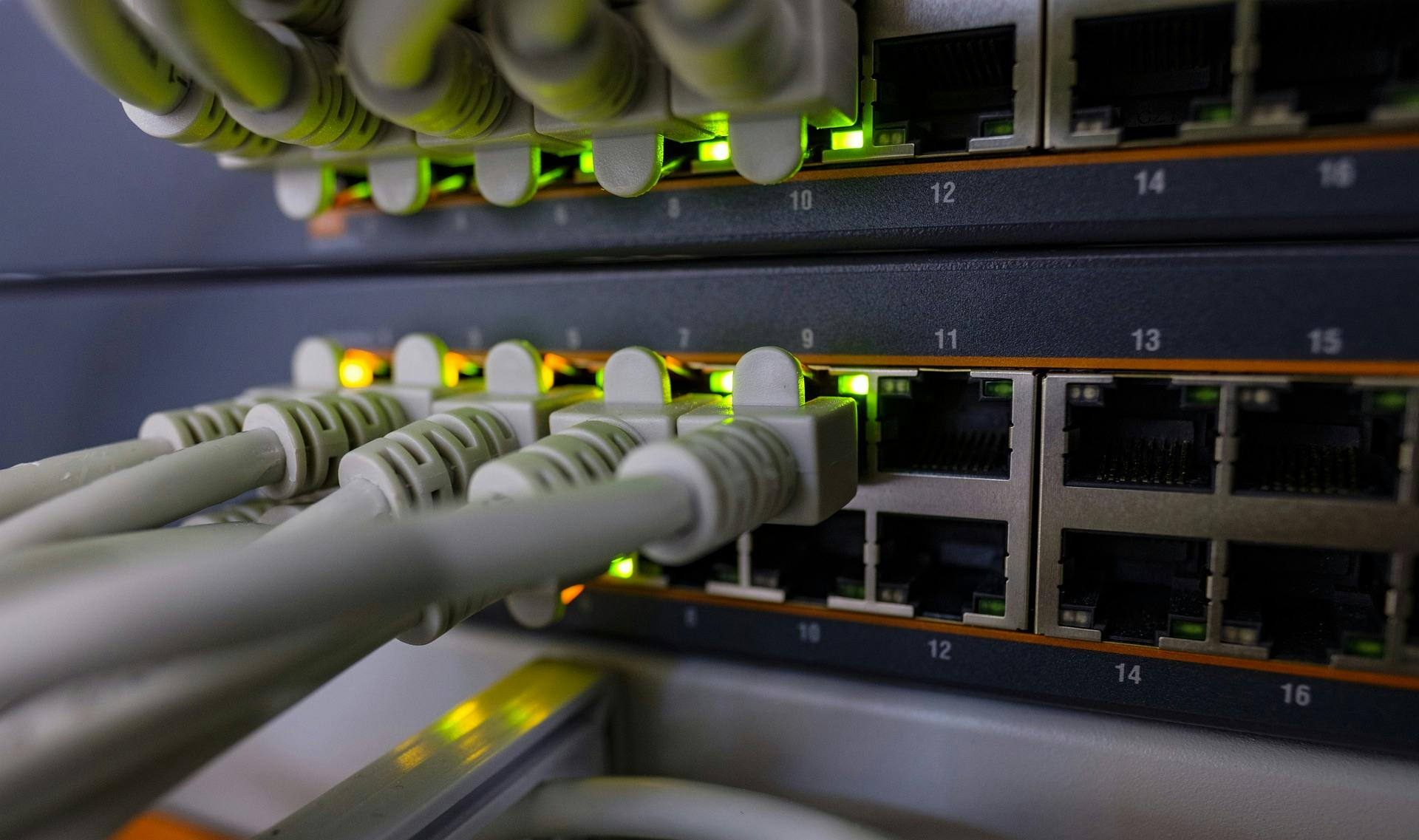Have you experienced a network security breach? If so, you are now likely aware of just how important it is to have a secure network. For those who have yet to experience this, we hope you never will. But if you are worried about the security of your network, there are a few ways in which you can bolster it. Network security is comprised of three parts: Hardware, software, and administration. All three work in tandem to protect your business’ network and data by covering the weaknesses of the other two. Regardless of how reliant your operations are on your network, it should be secure.
Network Security Hardware
Hardware that protects your network includes routers, infrastructure wiring, and server cupboards among others. The purpose of security hardware is to physically, or digitally via a physical piece of equipment, protect and restrict access to your network.
Routers are pieces of hardware that protect your network in a digital fashion. They come with built-in firewalls that are always active and serve as the first line of defense against anyone or anything attempting to breach your network wirelessly. Most people do not think of routers as a part of their network security. But this is why it is important to make sure your router is secured with a strong password. You do not want just anyone to be able to bypass the security benefits it provides.
Infrastructure wiring is more than just a great way to keep your wires neat and tidy. It can help prevent tripping and fire hazards, it makes your workspace look cleaner, and it makes it easier to identify and fix issues when they arise. However, what you may not have realized is that by maintaining your wiring, you are also eliminating a potential breach point. Physical data theft is one of the more common types of network breach. And your wiring and connection points are prime targets if they are out in the open.
Server Cupboards physically restrict access to your network by putting the access points within a container of some kind. In some cases, these containers could actually be metal cupboards, but in others, they may be entire server rooms. In either case, access is restricted only to those who have the passcode or key of some kind. The last thing you want is for anyone who has no business accessing your server to be able to access it.
Network Security Software
If a threat is able to bypass your security hardware, then software is the next line of defense. There are many different types of security software available. Antivirus software, which you likely have installed on your personal computer, is among the most common and effective at thwarting digital attacks. A virus is a malicious program that attempts to alter, copy, or destroy data against the wishes of the server or system owner. Unfortunately, while antivirus software is good at protecting against these often automated attacks, it is not as effective at protecting against a human attacker who has breached your system.
This is where monitoring and encryption software come in handy. Monitoring software can track and log what users on your network do. This can be helpful for identifying any suspicious activity and sending out alerts when certain actions are performed or parts of the network are accessed. And if something does go wrong, you will be able to go back and see exactly what path the intruder took. Encryption software can stop intruders in their tracks by making it much more difficult to access sensitive data. It can work within the network, during the transfer of data to and from the network, and even if files are taken off the network.
Administrative Network Security
The final type of network security is administrative security. This is distinct from the other two because it does not directly protect your network, but rather indirectly protects it through policies and permissions. One way in which administrative security can be used is to establish who is granted access to specific parts of your network. It is likely that not every one of your employees requires access to every part of the network — so do not give it to them! In this example, you would also want to establish in what way that access is restricted. Is it a hardware restriction such as having a key? Or is it a software restriction such as having digital permissions granted?
There are many other ways in which you can use administrative security to keep your network safe. Expanding upon the previous example, you may not want to completely restrict access to certain parts of the network but would rather restrict who can edit certain documents. More than just accountants may have reason to access financial documents on your network. But that does not mean that anyone other than accountants should be able to edit those documents.
Conclusion
The three components of network security are hardware, software, and administration. Hardware can protect your network both physically, such as in the case of server cupboards, and digitally, such as in the case of routers. Network security includes programs, such as antivirus and monitoring programs, that protect your network against attacks that have made it beyond the hardware security. And administrative security relies on creating a framework of policies and permissions that reduce the possibility for an attack to occur.
IT Services Group
Are you interested in securing your business’ network? ITSG can help with that. We’re able to provide and set up security hardware and software for your business. And we provide additional security services such as network monitoring and data backups. Contact us today for more information on how we can protect your network from harm.



